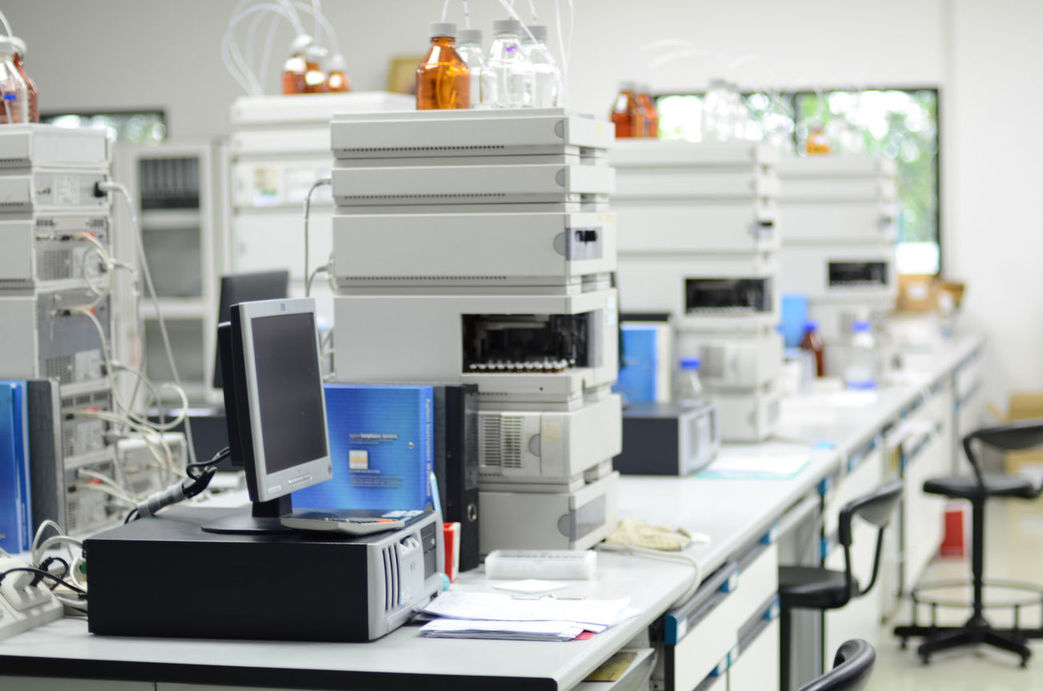Glycoinformatics-assisted Glycan Structure Lig-Plot Image
Unveiling the Intricate Beauty of Glycan Structures with Lig-Plot Image
Glycans play important roles in biological systems and are involved in many biological processes such as fertilization, embryogenesis, immunity, and disease. The structure of a glycan is often critical in mediating its function, and therefore Structural Analysis of Glycans is essential for understanding and applying glycan function. In the context of bioinformatics, CD BioGlyco utilizes informatics tools to successfully Interpret, Integrate, and Visualize Glycan Data.
In particular, CD BioGlyco utilizes the lig-plot tool for glycan imaging as shown below.
- The coordinates of the 3D structure of the glycan are entered into lig-plot and specific database files read and analyze the structure and identify the ligands (glycan and protein molecules) that bind to the glycan. In this process, all side chain atoms of the hydrogen bonding groups between the glycan and the ligand are preserved, as well as selectively preserving the main chain atoms of the glycan. The hydrophobic group, on the other hand, is represented by a position in the residue that is linked by a "virtual" bond to an atom on the atom that is in contact with the ligand.
- The lig-plot identifies and analyzes the rotational nature of the bonding between the glycan and the ligand. Any bond in a ring structure is not rotatable, because any movement on one side affects the structure on the other side. Based on this, lig-plot is suitable for recognizing bonds in ring groups, such as the aromatic ring of a phenylalanine side chain.
- In lig-plot, the identified ring-based structures are all flattened thereby unfolding the glycan 2D structure. A best-fit plane is calculated from the ring-based structure, then the ring and any terminal bonds attached to it are flattened and the glycan structure is progressively unfolded to generate a 2D structural map of the glycan.
Lig-plot-generated 2D structure maps of glycans can be interactively edited on-screen and also converted to various image formats. In addition, clients can overlay related lig-plot programs to highlight similarities and differences between related biomolecules bound to glycans.

Publication Data
Technology: Lig-plot
Journal: Royal Society Open Science
IF: 2.9
Published: 2020
Results: In this article, the authors analyzed the binding site and interaction of jacalin, a lectin from pineapple honey seeds, with hydroxychloroquine (HCQ) using a lig-plot. After further analysis, it was found that jacalin binds to HCQ with a free energy of -5.8 kcal/mol and a constant inhibition of 65.25 µM. Moreover, there is an interaction between jacalin and HCQ with a binding force comparable to that of the interaction between carbohydrates and lectins. Upon further analysis, it was found that hydrogen bonds were formed between jacalin and HCQ and hydrophobic interactions were present. These interactions are presented as a line graph in Fig.1, which also shows that jacalin has a binding site for hydrophobic drugs and can be used to develop jacalin-based drug carriers.
 Fig.1 Binding effect of jacalin to HCQ. (Rajendaran, et al., 2020)
Fig.1 Binding effect of jacalin to HCQ. (Rajendaran, et al., 2020)
Applications
- Glycopeptide interaction research: Glycan structure lig-plot image can be used to help researchers analyze the interactions between glycan molecules and proteins or other biomolecules, which can help to reveal the mechanisms of disease occurrence.
- Molecular simulation: Glycan structure lig-plot image can be used to simulate the structure and function of glycan molecules in living organisms to gain a deeper understanding of their biological activities.
- Drug design: The Glycan structure lig-plot image can be used to design drugs targeting specific glycan structures to help researchers in medical studies.
Advantages
- We have professional informatics knowledge and technology to help clients accurately analyze and interpret glycan structure and produce high-quality lig-plot images.
- We focus on clients' needs, have a strong sense of service and teamwork spirit, and provide high-quality custom glycan structure lig-plot image services to our clients.
- Our glycan structure lig-plot image service has a wide range of applications in the fields of biomedicine, medical diagnostics, food safety, etc., and meets the needs of different industries.
Frequently Asked Questions
- Can glycan structure lig-plot images be used to predict or design new glycan-protein interactions?
- Yes. These images provide a visual representation of the potential interactions between glycan structures and protein binding sites, which can help researchers identify key binding motifs and predict the binding affinity of different glycans to a specific protein. By analyzing these images, researchers gain insights into the molecular mechanisms underlying glycan-protein interactions and use this information to design new glycan structures with enhanced binding properties. Additionally, computational modeling techniques can be used to analyze and predict glycan-protein interactions based on the lig-plot images, allowing for the efficient design of novel glycan-based therapeutics or diagnostics.
- How do researchers interpret the data presented in glycan structure lig-plot images?
- Researchers interpret the data presented in glycan structure lig-plot images by analyzing the interactions between glycan structures and their binding partners. They may look at the specific glycan residues and their positions in the binding site, as well as the types of interactions (such as hydrogen bonding or hydrophobic interactions) that are occurring. Researchers may also compare different ligand structures to see how binding affinities vary depending on the specific glycan structure.
CD BioGlyco uses a lig-plot to help clients analyze and visualize the interactions of glycans with other biomolecules. Our services provide our clients with powerful tools and resources for their research in the field of biochemistry, enabling them to better understand the importance of glycans in biological processes and providing new perspectives and insights for research in related fields. Please feel free to contact us and we will be happy to provide you with more services on the analysis of glycan structures.
Reference
- Rajendaran, S.; et al. Targeting the glycan of the receptor binding domain with jacalin as a novel approach to develop a treatment against COVID-19R. Royal Society Open Science. 2020, 7: 200844.
For research use only. Not intended for any diagnostic use.
Quick Links
Related Services



 Fig.1 Binding effect of jacalin to HCQ. (Rajendaran, et al., 2020)
Fig.1 Binding effect of jacalin to HCQ. (Rajendaran, et al., 2020)


